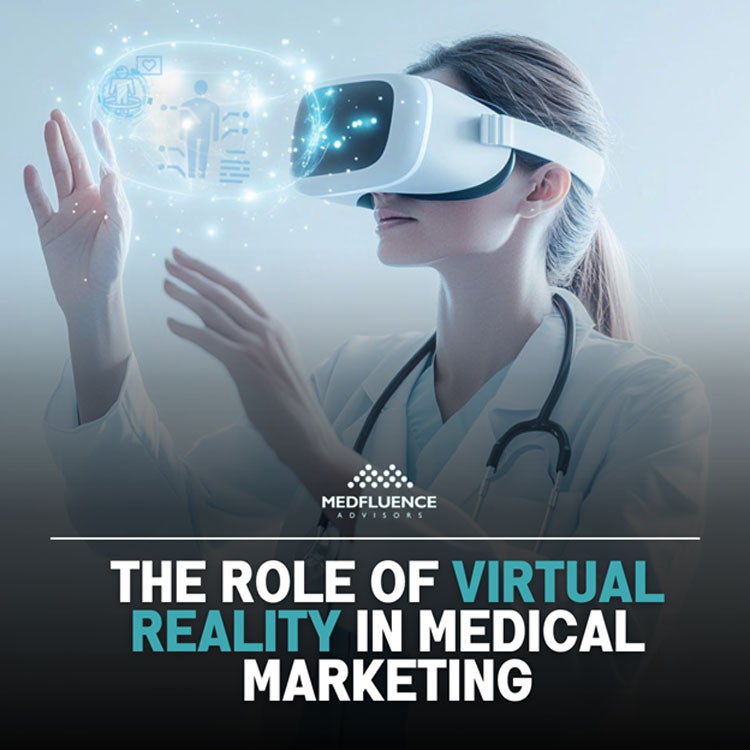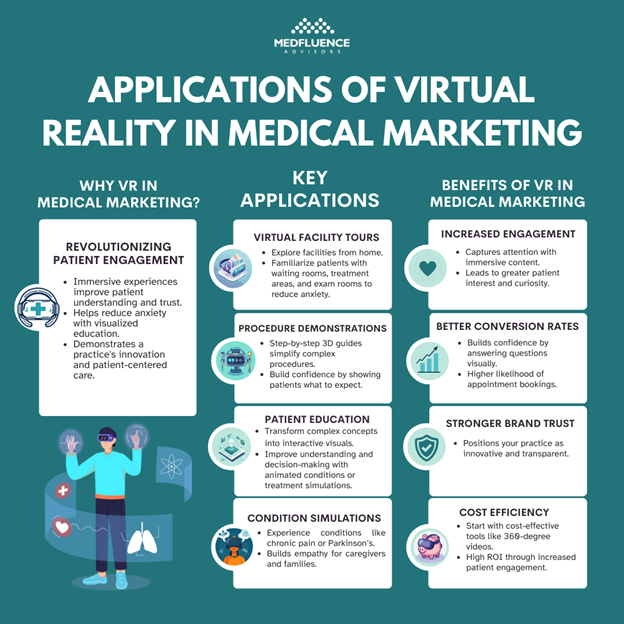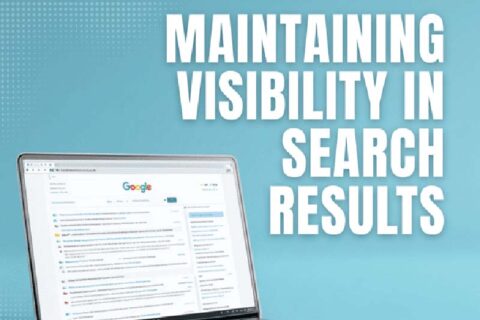The Role of Virtual Reality in Medical Marketing
Picture stepping into a medical procedure before it happens—not in the operating room, but from the comfort of your living room. This isn’t science fiction anymore; it’s the transformative reality reshaping how healthcare practices connect with their patients. In an age where trust and understanding are the cornerstones of patient care, virtual reality has quietly revolutionized the way we think about medical marketing. It’s fascinating to see how this technology, once relegated to gaming and entertainment, has become an intimate bridge between physicians and patients, turning complex medical concepts into tangible experiences.
For private practices navigating today’s dynamic healthcare landscape, VR isn’t just another marketing tool—it’s a window into possibility. Imagine being able to walk anxious patients through their upcoming procedures, letting them explore your facility as if they were already there, or helping them understand complex treatments through immersive, three-dimensional experiences. This technology is doing more than just showcasing medical expertise; it’s creating profound emotional connections and building the kind of trust that transforms uncertain patients into confident partners in their healthcare journey.
The beauty of VR in medical marketing lies not just in its technological sophistication, but in its ability to humanize healthcare at a time when patients crave deeper understanding and meaningful engagement. As we explore this intersection of innovation and patient care, we’ll discover how this immersive technology is redefining the very essence of medical practice growth, one virtual experience at a time.

What is Virtual Reality in the Context of Healthcare?
Virtual reality (VR) is a technology that creates a simulated, immersive environment using computer-generated imagery and sensory inputs like sound and touch. Through VR headsets or similar devices, users can interact with virtual spaces as if they were physically present. In healthcare, VR serves as a bridge between complex medical information and patient understanding by offering visual, interactive experiences.
Applications in Medicine
Virtual reality enhances the patient experience by making complex medical topics more approachable and engaging. Immersive experiences create an emotional connection with patients, building trust and fostering loyalty. In a competitive healthcare landscape, VR also differentiates practices by showcasing cutting-edge technology, supported by growing statistics on its marketing success. Virtual reality is already making a significant impact in healthcare, with applications such as:
- Training and Education: VR is used to train medical students and healthcare professionals by simulating surgical procedures or emergency scenarios in a controlled environment.
- Patient Education: Patients can gain a clearer understanding of their diagnoses or treatment plans through immersive, visual demonstrations.
- Therapy and Rehabilitation: VR has been used for pain management, physical therapy, and even mental health treatments, such as exposure therapy for anxiety and PTSD.
These use cases highlight VR’s ability to simplify and humanize complex medical processes.
Link to Marketing
The same immersive capabilities that benefit patient care can be leveraged in medical marketing. Practices can use VR to:
- Educate Potential Patients: Through virtual demonstrations of procedures or conditions, practices can ease patient anxieties and encourage informed decision-making.
- Build Trust: By showcasing facilities, staff, and treatment options in a transparent and engaging way, VR fosters a sense of credibility and connection.
- Attract New Patients: With its unique ability to engage and educate, VR helps practices stand out, turning curiosity into appointments.
Virtual reality bridges the gap between patient needs and practice offerings, creating meaningful engagement that traditional marketing methods cannot achieve.
Why is VR Gaining Popularity in Medical Marketing?
Virtual reality transforms the patient experience by making healthcare more approachable and relatable. Instead of overwhelming patients with dense information, VR allows them to:
- Visualize Procedures: Patients can “step inside” a procedure to understand how it works, alleviating fear of the unknown.
- Explore Facilities: A virtual tour offers a stress-free way to familiarize patients with the practice, making them feel more comfortable before their visit.
This interactivity makes the healthcare journey feel personal, educational, and less intimidating.
Emotional Connection
VR doesn’t just inform—it engages. Immersive experiences create a stronger emotional connection between patients and practices by:
- Building Empathy: Condition simulations help patients or caregivers understand what living with certain health challenges might feel like, fostering trust and connection.
- Humanizing the Practice: Introducing staff and showcasing real patient success stories through VR creates a sense of authenticity that resonates with viewers.
When patients feel understood and connected, they are more likely to choose a practice that prioritizes their needs.
Differentiation
In a competitive healthcare market, VR helps practices stand out by offering innovative, memorable experiences that patients can’t find elsewhere. While competitors rely on static ads or brochures, practices that use VR demonstrate forward-thinking and patient-centric care, which appeals to tech-savvy audiences.
Supporting Data
The growing adoption of VR in marketing is backed by compelling data:
- A recent report showed that 55% of consumers prefer brands that offer innovative experiences like VR.
- The global VR in healthcare market is projected to reach $46.37 billion by 2032, indicating its rapid integration into the industry.
- Companies using VR in marketing have reported up to a 30% increase in engagement rates compared to traditional methods.
These numbers emphasize the potential of VR to transform patient engagement and practice growth, making it a powerful tool in modern medical marketing.
Applications of VR in Medical Marketing
VR marketing allows practices to provide virtual facility tours, giving patients a sense of comfort and familiarity before their first visit. Procedure demonstrations and condition simulations simplify medical concepts, reducing patient anxiety. Practices can also use VR for interactive education, turning complex information into easy-to-understand visuals.
Virtual Facility Tours
Virtual reality enables practices to offer prospective patients an immersive tour of their facilities from the comfort of their homes. Patients can explore waiting rooms, examination areas, and treatment spaces, helping them feel familiar and comfortable before visiting. This is especially beneficial for individuals who feel anxious about healthcare settings.
Procedure Demonstrations
Explaining medical procedures to patients can be challenging, but VR makes it simpler and more engaging. Practices can create 3D, step-by-step demonstrations of procedures to show patients what to expect, easing fears and building confidence in the care provided.
Patient Education
VR transforms complex medical concepts into interactive, visual experiences. For example, patients can explore how a specific treatment targets an issue or see an animated representation of their condition. These educational tools ensure patients are well-informed, improving understanding and decision-making.
Condition Simulations
Empathy is key to patient care, and VR condition simulations can help patients and their families understand medical conditions from a first-person perspective. For example, a caregiver can experience what it’s like to live with conditions like Parkinson’s disease or chronic pain, deepening their understanding and preparing them for caregiving challenges.
Benefits of Using VR in Medical Marketing
VR keeps patients engaged with highly interactive content, which can lead to higher appointment bookings and increased trust in a practice’s expertise. Contrary to common misconceptions, VR can be cost-effective for smaller practices, especially when starting with simple tools like 360-degree videos that require minimal investment.
Increased Engagement
Traditional ads and brochures struggle to hold attention, but VR captivates audiences with its immersive and interactive nature. By offering patients a chance to “experience” care before committing, practices can foster genuine interest and curiosity.
Better Conversion Rates
VR allows practices to address patients’ questions and concerns more effectively than text or images alone. When patients can virtually explore a facility or visualize a procedure, they’re more likely to feel confident in their decision, leading to higher appointment bookings.
Stronger Brand Trust
By adopting VR, practices demonstrate transparency and a willingness to invest in cutting-edge technology for patient benefit. This fosters trust, positioning the practice as a leader in innovation and patient-centered care.
Cost Efficiency
While VR may seem expensive, it can be surprisingly cost-effective. Practices can start small with 360-degree video tours or affordable VR content creation services. Over time, the return on investment from increased patient engagement and conversions often outweighs the initial expense. Additionally, tools like Google Cardboard and mobile-friendly VR apps make VR accessible to smaller practices without requiring a large budget.
By combining these benefits, VR provides practices with a powerful marketing tool that enhances patient relationships and drives measurable growth.

Challenges and How to Overcome Them
While cost and technical expertise are challenges, starting small with affordable tools like Google Cardboard can help overcome barriers. Practices can also partner with VR developers to ensure content quality and accessibility. Training staff to integrate VR into workflows is crucial to make the transition seamless.
Cost Concerns
The upfront investment in VR technology can be intimidating for smaller practices. However, practices can mitigate expenses by starting small. For example, 360-degree videos offer an affordable entry point, allowing practices to showcase facilities or procedures without the need for high-end equipment. Additionally, practices can look into grants or financing options tailored to healthcare innovations. Over time, the return on investment often outweighs the initial cost.
Technical Expertise
Creating VR content requires specialized knowledge, which can be a hurdle for many practices. Partnering with experienced VR developers or marketing agencies that specialize in healthcare can bridge this gap. These experts can handle the technical aspects, from designing immersive content to ensuring compatibility across devices, allowing practices to focus on patient care.
Patient Accessibility
Not all patients have access to VR headsets or advanced devices. To address this, practices can create VR content that works on easily accessible platforms, such as smartphones or tablets, through apps or web browsers. Google Cardboard, for instance, offers an affordable way for patients to experience VR using their phones, making it an inclusive option for a broader audience.
Learning Curve
Integrating VR into daily operations may require staff training and adjustments to workflows. To ease this process, practices can start with straightforward VR applications, like virtual tours, before moving on to more complex uses. Providing step-by-step training for staff and appointing a “VR champion” to oversee implementation can ensure a smooth transition.
How Small to Mid-Sized Practices Can Get Started with VR Marketing
Small practices can begin by creating 360-degree videos or virtual tours of their facilities. Collaborating with specialized VR agencies ensures professional and impactful results. By focusing on high-impact areas like patient education, practices can maximize their ROI while gradually expanding their VR initiatives.
Start Small
Begin with simple, cost-effective VR tools, such as 360-degree videos or basic interactive content. These options allow practices to test the waters without committing to a significant investment. For example, a virtual walkthrough of the practice can help familiarize patients with the environment.
Partner with Experts
Collaborating with VR developers or marketing agencies that understand healthcare is key to success. These experts can create professional, impactful content tailored to a practice’s unique needs, ensuring high-quality results without requiring in-house expertise.
Focus on High-Impact Areas
Identify areas where VR can make the most significant difference. Patient education, procedure demonstrations, and facility tours are high-impact applications that directly address patient concerns and boost engagement. Prioritizing these areas ensures resources are used effectively.
Test and Measure Results
Tracking the success of VR initiatives is critical. Use analytics to measure engagement, appointment conversions, and patient feedback. This data will help refine strategies, ensuring the best possible return on investment and continuous improvement.
The Future of VR in Medical Marketing
As VR technology evolves, smaller practices will benefit from more affordable and accessible tools. Future integrations with AI and telemedicine will further enhance patient care and marketing capabilities. Younger, tech-savvy patients will increasingly expect VR, making its adoption a key factor in staying competitive in the healthcare industry.
Advancements in Technology
As VR technology advances, it’s becoming more affordable and accessible. Lighter, more portable headsets and software improvements will make VR easier to integrate into small to mid-sized practices. Future developments may also include enhanced graphics and seamless interactivity, making experiences even more impactful.
Integration with Other Technologies
The combination of VR with artificial intelligence (AI), telemedicine, and wearable devices will open new doors in medical marketing. For example, VR could be used alongside AI to create personalized treatment simulations or integrated with telemedicine platforms to provide remote yet immersive consultations.
Changing Patient Expectations
Younger, tech-savvy patients increasingly expect healthcare to incorporate advanced technology. As these demographics grow, VR will likely become a standard part of the patient experience. Practices that adopt VR early will position themselves as innovative leaders, attracting this forward-thinking audience.
By embracing these trends, practices can stay ahead of the curve, delivering exceptional patient experiences while achieving sustainable growth.
Where Patient Education Meets Practice Growth
Virtual reality is revolutionizing how medical practices connect with and educate their patients, transforming traditional marketing approaches into immersive experiences that build trust and understanding. Through Medfluence’s innovative practice growth strategies, physicians can harness the power of VR to showcase their expertise, demonstrate procedures, and create meaningful connections with patients seeking advanced treatment options.
As healthcare continues to evolve, practices that embrace VR technology position themselves at the forefront of medical marketing, attracting patients who are actively seeking solutions while differentiating themselves in an increasingly competitive landscape. By partnering with Medfluence, physicians can leverage cutting-edge VR capabilities to grow their practices, enhance patient education, and ultimately deliver the innovative care they are passionate about providing. The future of medical marketing isn’t just about reaching more patients—it’s about creating deeper, more meaningful connections that lead to better healthcare outcomes.


